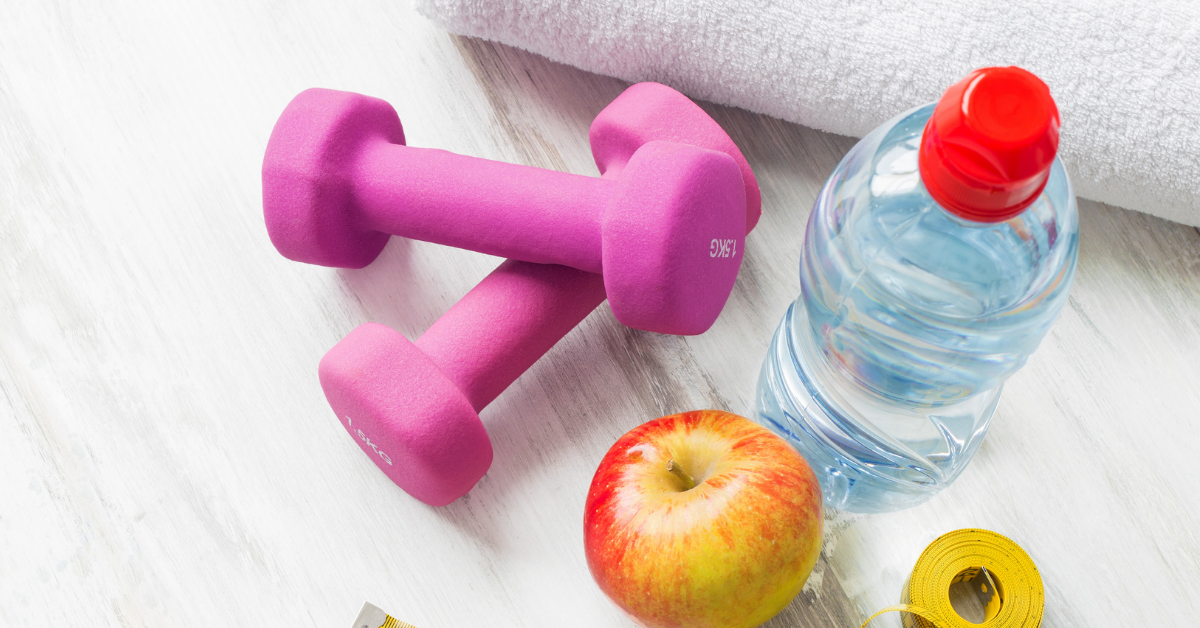
Managing weight AND diabetes: Challenging AND possible. Here's how Ginger Vieira does it.
Weight-loss ain’t easy! Even without diabetes. Getting the body to quit its instinctive survival mode and actually burn body-fat for fuel is a tricky, complicated, challenging game.
When you add any type of diabetes to that challenge, achieving sustainable weight-loss is about much more than just counting calories, will-power, restricting carbs, and exercising daily.
We’re juggling a hormone that plays a huge role in metabolizing the food we eat, using that food for energy, building and maintaining muscle, and storing those calories as glycogen or body fat. Insulin is the most powerful hormone in the human body!
And don’t forget about insulin resistance. Combatting this during the game of weight-loss means weight-loss will likely take longer and take more discipline.
But we need insulin -- whether you’re trying to lose weight or gain weight, you need insulin.
Here are 2 big things that helped me lose weight and maintain a lean, energetic bodyweight as a person with diabetes.
I stopped restricting my total daily amount of carbohydrates.
Plenty of people following ketogenic diets will disagree on this one, but as someone who really doesn’t want to follow a ketogenic diet, it’s a crucial detail for my success.
Instead of trying to eat a strict low-carb diet (which is certainly one way to lose weight), I gave myself the freedom to eat as much fruit or gluten-free tortillas or corn on the cob or even homemade desserts as I want!
And you know what happens when you give yourself full permission to eat something?
You simply don’t want it as much.
By removing the restrictive mentality around carbohydrates, I removed the mind-game that “dieting” often creates -- causing you to think too much about the one thing you’re trying to avoid, and likely eventually going to overeat.
Instead, now there are no rules. There is no one telling me what I can or cannot eat. There is just me, making thoughtful decisions around food.
Could I technically eat 4 slices of gluten-free toast for breakfast and a giant bowl of grapes? According to my lack of rules, yes. But do I want to? No.
I know my body and my mind feel best when I start my day with protein (eggs or sausage) and a big serving of vegetables (spinach and kale or frozen veggie medley).
And while I could eat dessert after lunch and after dinner, I know I feel best when I only eat a sugar-laden dessert no more than once per day in the evening. (I do try to make sure I go several days without any dessert, to keep that sweet-tooth in check!)
So you can see that by removing the restriction around carbohydrates, I didn’t actually start eating carbohydrates all day long. Instead, I generally hit somewhere between 100 to 150 grams of carbs. Many of my meals are still very low-carb which leaves me room to enjoy homemade whoopie pies!
But 80 to 90 percent of everything I eat is a whole food that I prepared myself. Instead of striving to eat low-carb, I simply strive to eat mostly real, whole food. Period.
I exercise in a “fasted state” instead of immediately after a meal.
Fasted exercise has been around a long time -- one example is from the bodybuilding world. Bodybuilders preparing for a competition need to be as lean as possible, but they also worry about burning muscle at the same time as burning fat.
Fasted exercise can be a powerful tool for a person with type 1 or type 2 diabetes.
By exercising in a fasted state, your body is going to burn fat for fuel instead of glucose.
The traditional meaning of fasted exercise is first thing in the morning before breakfast, but for people taking fast-acting insulin, we can create a useful fasted environment by exercising when it’s been at least 3 to 4 hours since our last meal and last injection of fast-acting insulin.
Fast-acting insulin stays in your body for up to 4 hours. If you then exercise at that 4-hour mark, you only have your background insulin present, which means your blood sugar shouldn’t drop low during cardiovascular (aerobic) exercise.
As a mother of two little kids -- and as someone who likes sleeping -- I’m not able to make exercise happen before breakfast. Instead, I time my daily workouts for before dinner.
Here’s how I make it work for me most days of the week:
-
My kids are asleep by 7 p.m. and I haven’t eaten since my 3 p.m snack that is either some combination of fats and fruit (like peanuts and blueberries) or an Olly Protein Bar (one of my regular processed food indulgences).
-
I check my blood sugar to make sure I’m in my goal range. (If my blood sugar is high, I’d take 25 percent of my normal correction dose of insulin. If slightly low, I’d eat 10 grams of fast-acting carbohydrate.)
-
Then I hop onto my treadmill (to walk or do jogging intervals) or I grab my jump-rope and I can do 30 to 60 minutes of aerobic exercise without thinking twice about my blood sugar dropping.
-
If I was doing a strength-training (anaerobic) workout, I wouldn’t be surprised to see my blood sugar rise. Once I can be sure that that type of work definitely increases my blood sugar because of muscle and glycogen breakdown, I’d compensate with a small bolus of insulin either at the start or middle of my anaerobic workout.
Working to make fasted exercise part of your routine as a person with diabetes will require some patience and experimenting. Take good notes. Check your blood sugar often. Be prepared for lows regardless of their un-likelihood, and consider it a project you’re working on until you find the routine that works for you!

